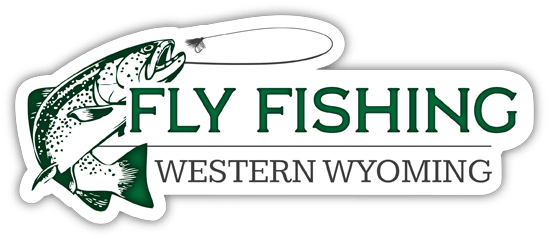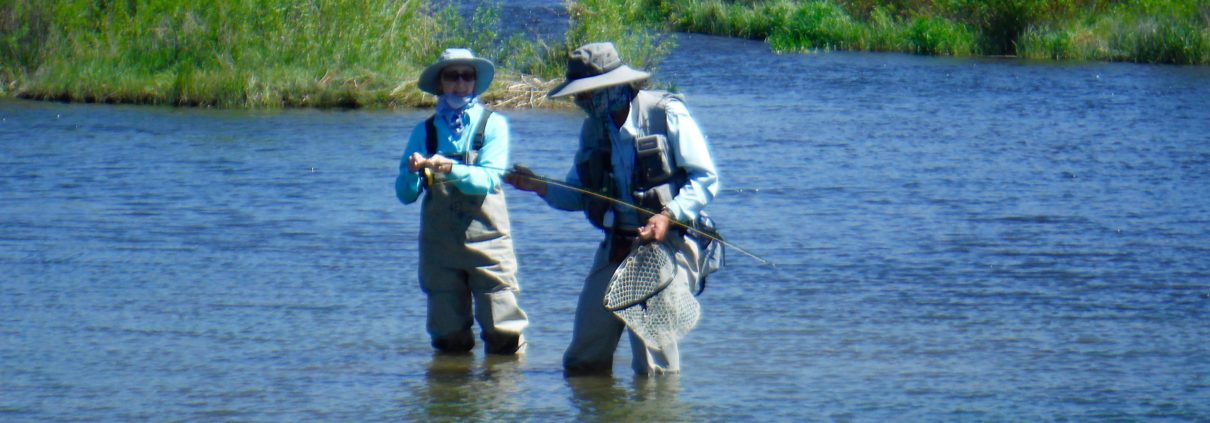Five Essentials of Catching
Five Essentials of Catching
I’m stealing part of the title of this article from Bill and Jay Gammel’s “Five Essentials of Fly Casting”. If you haven’t read it, you should. It is a good way to begin understanding the principles behind casting a fly rod and line. This article will be a bit broader in scope. In my view, there are five main components of catching fish with a fly rod. Anywhere, any place, any type of fish, if you want to be optimally successful, all five are essential.
Where are the fish?
In many environments 90% of the fish hold in less than 10% of the water. For example, in large lakes, oceans, and other large still waters, fish will hold at certain depths during different times of the year. If we are 10 feet off, too low or too high, we’ll catch no fish. Depending on species, time of year, insect hatches, water flow and temperatures, we will find lots of trout in riffles and sometimes absolutely no trout will be in the riffles. Obviously, if we are fishing where there are no fish it’s a little tough to catch fish! If we want to catch fish, we need to learn where they are!
What are the fish eating?
If we are casting flies we’d better know what to put on the end of the leader! A good knowledge of entomology is important in trout fishing, plus we’d better know how to identify and match other food forms like leaches, baitfish, crawfish, and even mice and newts. Other environments require knowledge of the local baitfish, eels, crabs, shrimp, worms, and snails. I’ve caught large-mouth bass on birds, snakes, and frogs. Even if we find the fish, if they are eating hamburgers and we are tossing hot dogs, we will catch only the occasional outlier. If we want to catch fish, we need to learn what the fish are eating!
How to present the fly?
This is mostly about casting, equipment and positioning. How do we get the fly to where the fish is, and in a way that imitates the life form we have chosen? Is a sink tip line better than a floating line? Is a long head better than a short head? Is a curve cast better than a dump cast? Local guides can help us with finding fish and knowing what to put on the leader. They can even help with where to stand or anchor and what type of equipment to use, but they can’t teach us a complicated cast in 5 minutes, on the water, with fish boiling in front of us. It simply isn’t going to happen. Without knowing how to make a number of different types of casts we will catch a lot fewer fish, at least on most days. By way of illustration, I was recently guiding two anglers on a local river. The fishing was tough and very precise presentations and accurate drifts were required. A friend of mine who is a casting instructor was fishing the river at the same time. We happened to meet in the parking lot before my clients arrived. He asked me what was going on and I told him the type of flies that were working and the presentations needed. (He had never fished the water before.)
My two clients arrived and we happily trotted down to the river. At lunch, I saw my friend again. I asked him how he had done (out of the earshot of my frustrated clients). He told me he had hooked eleven fish (a good number for even an old hand at that river). One client was an okay caster, but lacked accuracy and mending skills; he hooked four fish. The other client was a poor caster with very limited skills; he hooked one fish. When we arrived at 8 am there were seven cars in the lot. When we ate lunch every car but ours departed with the occupants making comments like, “Boy, they aren’t biting today!” and “I don’t think there are any fish in here!”.
The difference was knowing where the fish were, what they were eating, and most importantly, how to cast to them. My clients were told where the fish were, and exactly what to fish with. They couldn’t cast very well. My friend knew what to fish with, but had limited specific knowledge of the fish’s locations, but despite this handicap, he hooked 11 total fish to their five total.
What casts should we know? Other than being able to dictate accuracy, I believe the makeup of the following cast 90% of what we need to get to most fish: roll cast and roll cast to a pickup and shoot, double haul, some form of dump or slack line cast, and aerial mends to the left and the right. In addition, we must be able to cast reasonably well to all positions in a wind! I can’t count the number of times a client is forced to cast into a headwind and is unable to do so. $450.00 to keep picking flies out of one’s shirt seems a little stiff to me! Get some casting lessons and practice! We’ll hook three times as many fish in many circumstances. If we want to catch more fish, we need to learn to cast and present the fly better!
How to set the hook
Let’s go back to the previous story involving my friend and my two clients. It should be noted that I used the word ‘hooked’ and not ‘landed’. My friend landed nine of his eleven fish. My clients landed one of their five fish. We were using 5x tippets with size 18 nymphs and the fish are big, burly, explosive 18” – 21” rainbows that simply explode on being hooked. How do we protect weaker tippets? How do we set the hook? Another example is tarpon fishing. A straight, very violent strip set is essential. Even then the hook might not penetrate. Without it we have no chance! My guiding record on the river mentioned above is 18 straight break-offs! (The incorrect equipment, too stiff a rod tip had something to do with it, but the two clients wanted to use their rods. Lesson learned – take the guide’s advice!) Learning to make the correct set is a big part of success in many fishing situations. If we set too soon, too late, or too hard or too soft, we may not hook the fish or we will break the fish off on the hook set. If we want to catch more fish, we need to learn to set the hook properly!
How do we fight and land a fish?
I’ve seen lots of fish lost after everything else was done correctly! Let’s discuss the river mentioned previously. In that environment, we need to get out of the water ASAP and we need to move! Sometimes we need to cross the river to keep the fish away from willow roots. If the fish goes that way, we need to really move downstream. We need to put the line at right angles to the fish, which involves knowing where our rod belongs. Another example, when dock fishing for snook in Florida, we always have someone on the trolling motor to spin the boat. Any help we can get to keep that fish from the pylons is appreciated! At what angle and direction should the rod be pointed? How much pressure can we apply? A lot of this is experience and actual fishing practice. If we want to land more fish, we need to learn how to fight them!
Conclusion
Too often we blame other factors when we fail to catch fish, when in fact the fault is ours. As someone once said, “When we miss the bullseye, the fault doesn’t lie with the target”.




Leave a Reply
Want to join the discussion?Feel free to contribute!